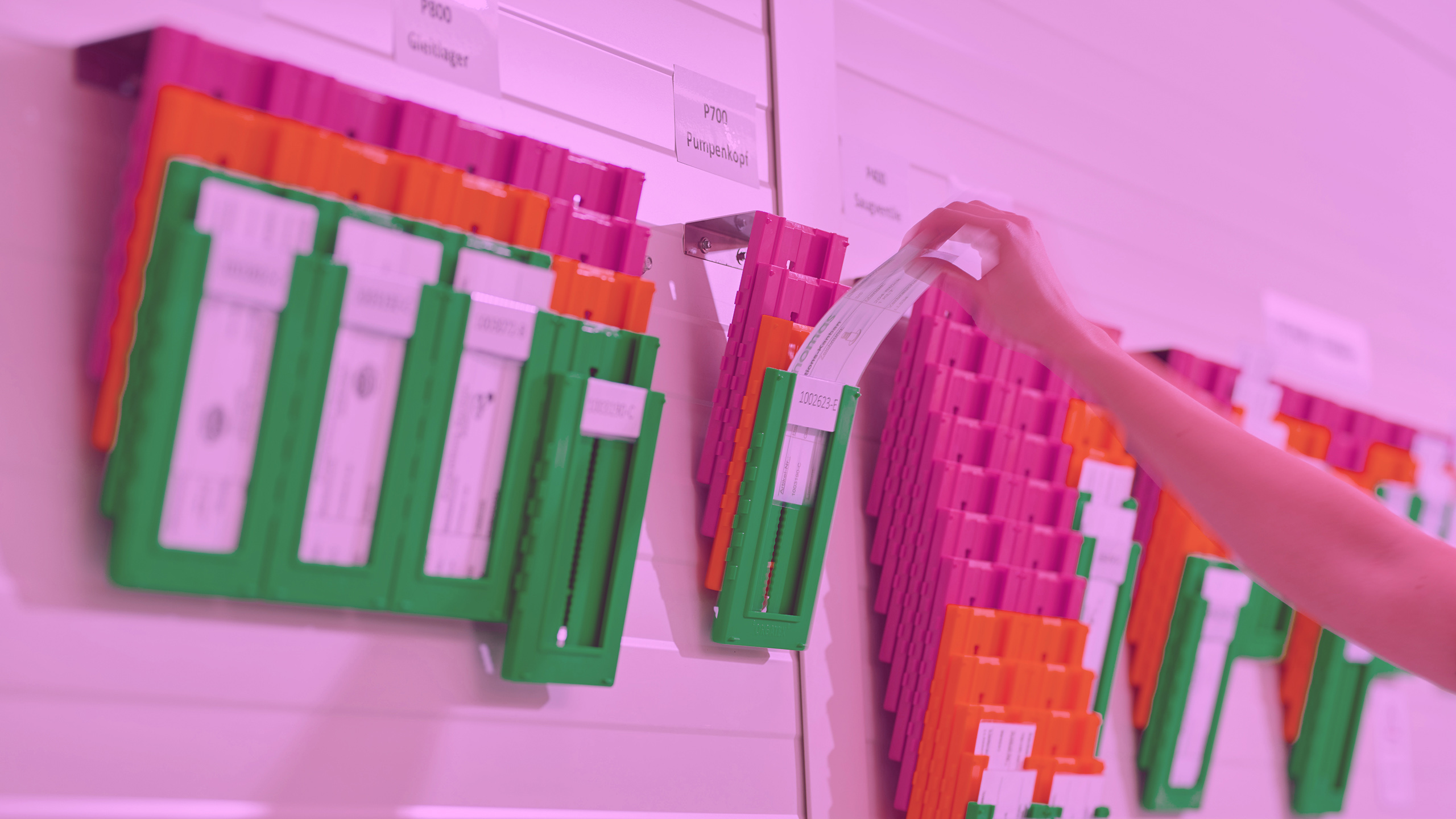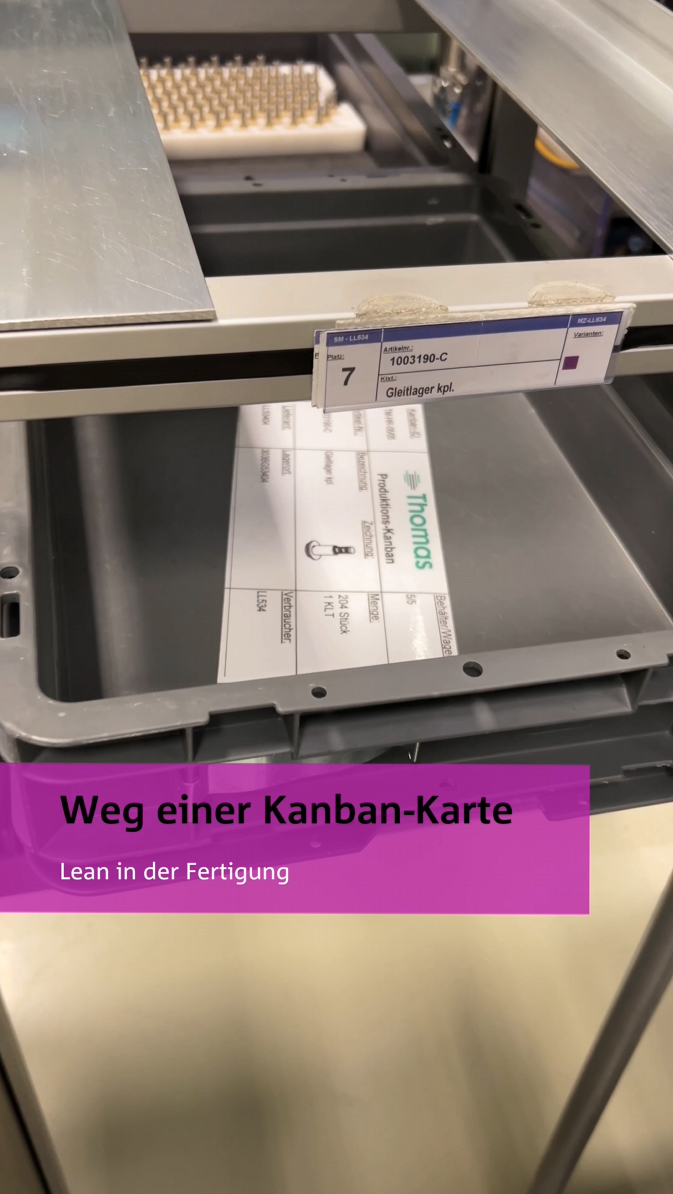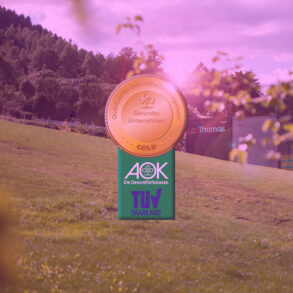In the 1990s, lean production emerged from Japan to take the world by storm. To this very day, this compelling concept continues to influence industrial production around the globe. One of its essential features is „lean“ production – the key to working efficiently and without waste, while also keeping error rates to a minimum. Thomas has also embraced the principles of lean production and regularly adds new elements. The „Lean Team“ is currently conducting a pilot project for the purpose of introducing the Kanban system for „Assemblies“.
Lean with Kanban
The objective is to reorganize our manufacturing operations: instead of producing several identical assemblies in advance and storing them at our central warehouse, as was previously the case, various assemblies are now manufactured at a specific workplace by a single employee according to consumption. The entire process is „managed“ by means of Kanban.
Kanban is Japanese and translates as „signboard“ or „billboard.“ It is a system in which pending production orders are organized on a board using cards: The cards not only determine which components are to be assembled, but also prioritize the various production orders using traffic light colors. How many cards are green, yellow, or red, i.e., have high or low priority, is calculated beforehand, factoring in a buffer. This ensures that all parts required for upcoming production jobs are available at the workplace and that the production line remains „in flow.“
The video on the left shows the path of a Kanban card (original language version: German).
More efficiency and flexibility
Organization by means of Kanban is efficient and flexible. Another significant advantage is that production no longer takes place in advance, but in a so-called „pull flow.“ It is based on current demand. Assemblies are only produced when they are actually needed on the production line for the manufacture of a specific customer order. This eliminates the need for extensive warehousing and reduces the amount of capital tied up in materials. What is more, defects can be detected and rectified immediately. And last but not least, Kanban provides the basis for a continuous improvement process (CIP) across all departments – for ongoing workflow optimization.
Thomas‘ Lean Team is responsible for implementing the pilot project for Assemblies. It is committed to identifying ways of using elements of lean production for the purpose of improving processes – an ongoing mission. Its in-depth value stream analysis revealed the potential for improvement and savings associated with the reduction of warehouse inventory at Thomas. The results of this project are compelling: the use of Kanban cards is to be gradually extended to other areas of production.
Lean production: eight types of waste
01 Overproduction
02 Inefficient transportation
03 Inventory
04 Inefficient „motion“ within the company
05 Waiting times
06 Errors and defects
07 Use of unsuitable processes and technologies
08 Unused human potential












